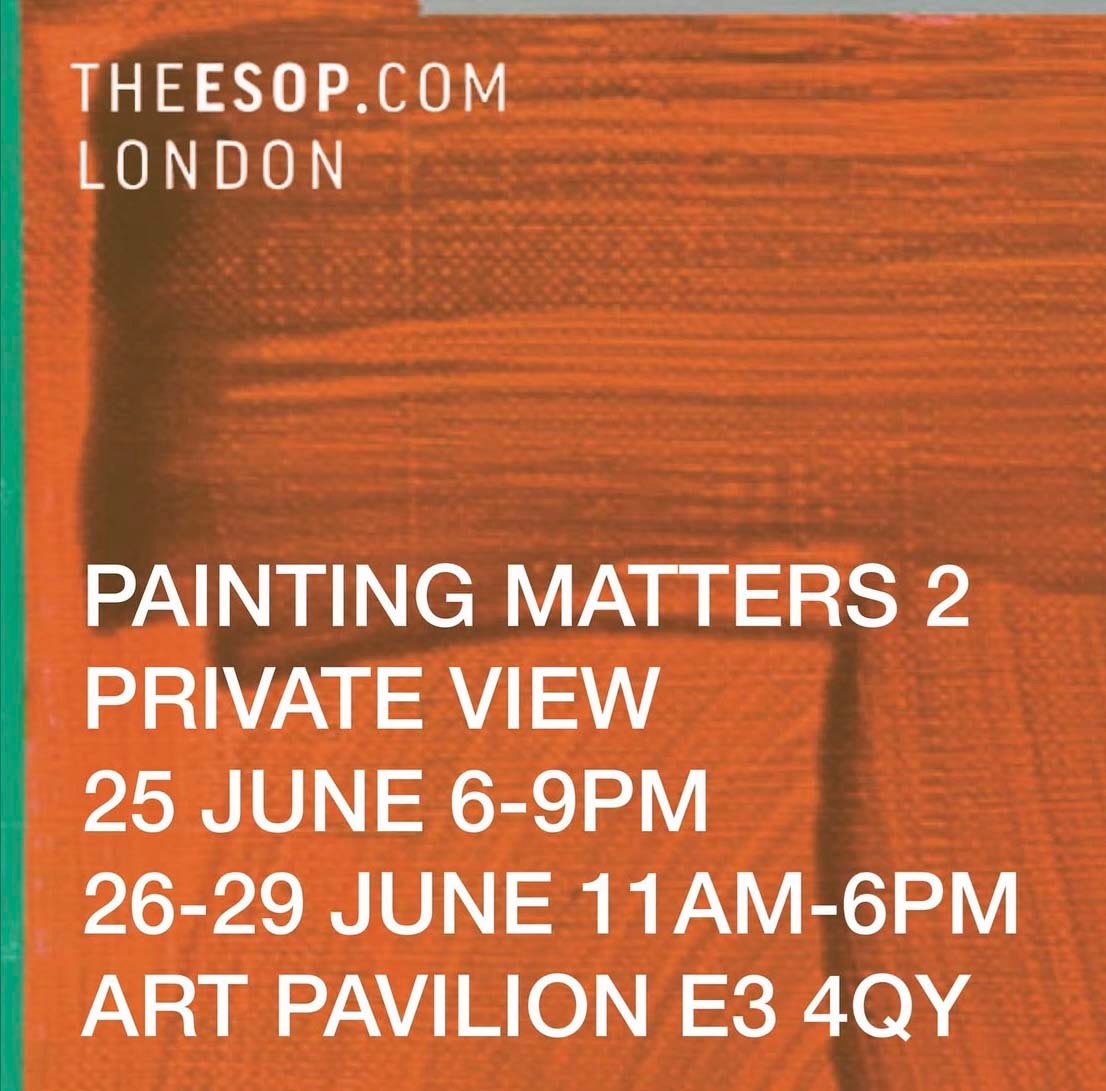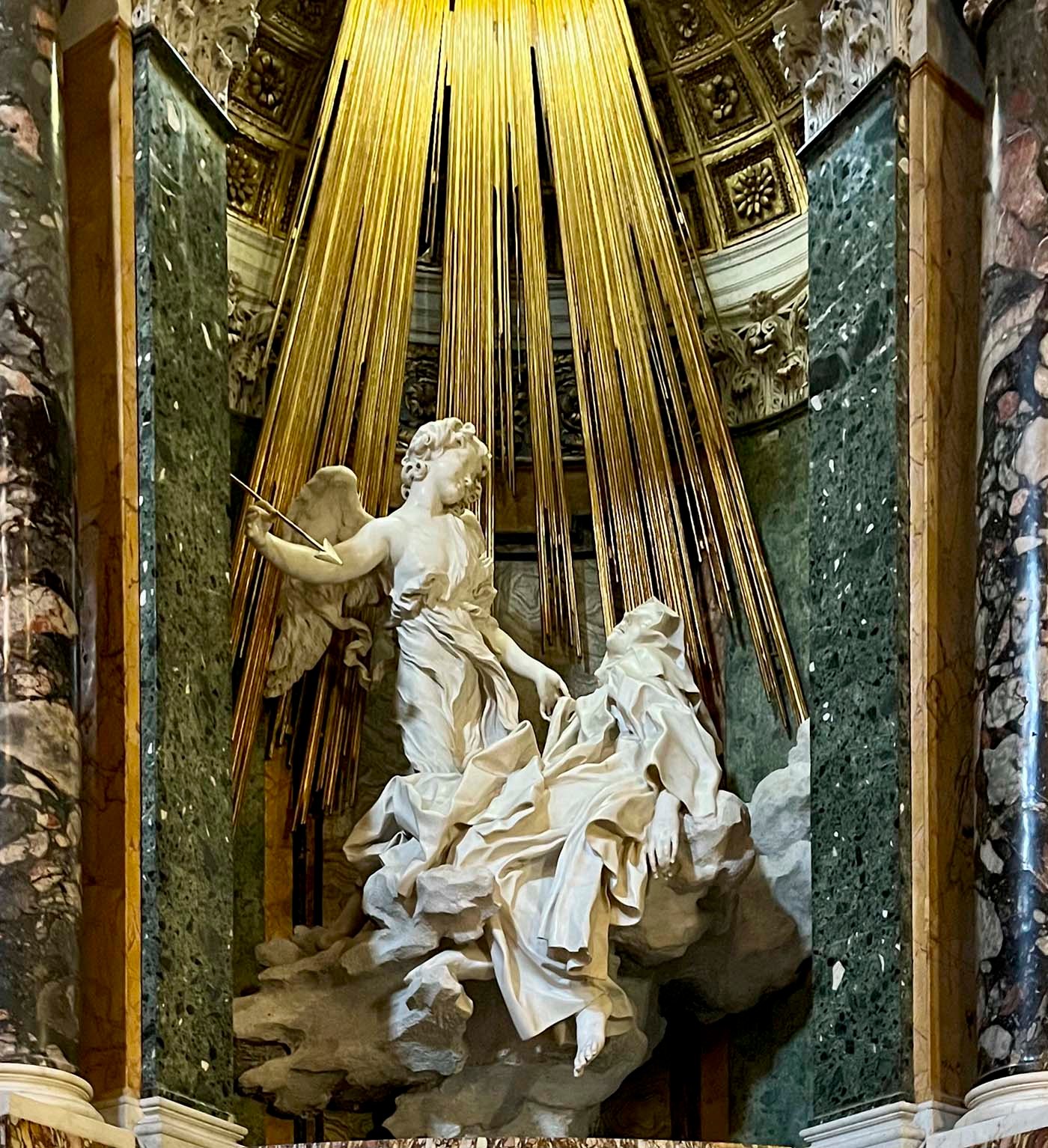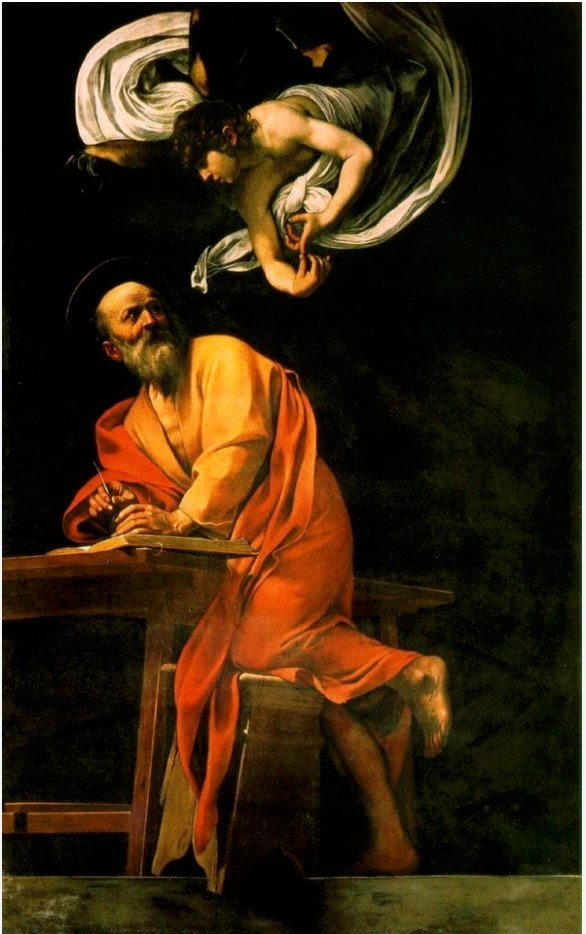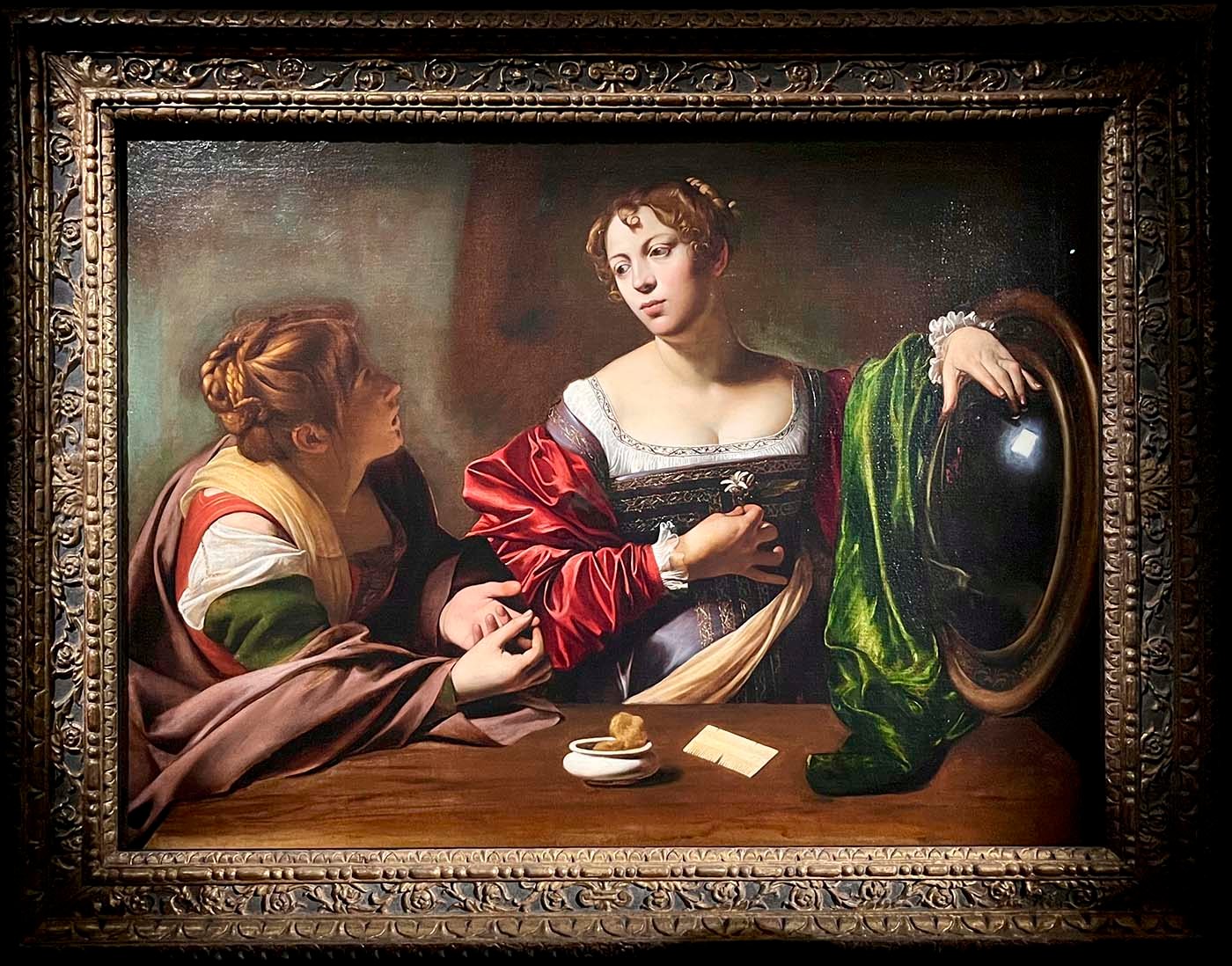
04 Jun Invigorating the Dark Shades
I have been busy finishing the last work for my Essential School of Painting end of year show. I do hope you can join me there for the Private View, 6 til 9 on 25th June or when I’m invigilating between 2 and 6 on the afternoon of 26th or 29th June.


‘The Wind of the Baroque’ acrylic on paper, some quick studies for what may be my next painting.
The Baroque is very much on my mind as we just spent two nights in Rome, primarily to see the Caravaggio 2025 Exhibition, at the Palazzo Barberini. It contains several paintings that are held in private collections and very rarely seen.
While we waited for our timed slot we took a stroll to check out some sculpture by Mr Baroque himself, Gian Lorenzo Bernini.

The wind of the Baroque was blowing strongly for the Ecstasy of St Theresa, whipping up some sensational fabric action, inspiring my current experiments in the studio.

I must give a mention to two favourites by Caravaggio that are not in the exhibition but also inspired the flying drapery and the composition in my current work.

The Inspiration of St Matthew

Detail from The Seven Acts of Mercy
I think Caravaggio is a remarkable painter with a unique vision. His art is characterised by his use of a powerful chiaroscuro, using light and shadow in a way that was completely his own. His first biographer Giovanni Pietro Bellori used a phrase that has stuck in my mind ever since, describing his process as ‘Invigorating the Dark Shades’. There are several terrific examples of the dark shades in the exhibition.

The Flagellation of Christ
It was great to see this painting again, after seeing it recently at the Capodimonte in Naples. It’s a stunning composition, using the fall of the light on the participants to suggest a crucifix, and the ‘invigorated darkness’ of the dimly lit central column fading into the dark void above.

Martha and Mary Magdalene
The New Testament story of Jesus’ visit to the house of Martha and her sister Mary does not mention their clothes but Caravaggio uses the two womens outfits to differentiate their response to their visitor. Martha, wearing work clothes, makes herself busy preparing the meal but Mary does not help, choosing instead to put on her best outfit to listen to Jesus’ teaching. When Martha complains Jesus tells her that Mary is doing the right thing.
I’m very impressed by the varied folds of each fabric, the delicate cuffs and expressive hands. Mary has jewel coloured clothes and a dramatic dark brown background, while behind Martha there is a beautifully glowing, blue glaze over the same brown foundation. Her clothes are also of a softer colour.

The Martyrdom of St Ursula
Caravaggio’s last painting, Saint Ursula, is very dark, offering few details. Ursula is shot by the king of the Huns, after she refuses to marry him, seeing as she is already promised to God. A minimal shaft of light leads the eye to a line of red cloth, symbolizing her violent martyrdom.
Have a great week.
Fiona


